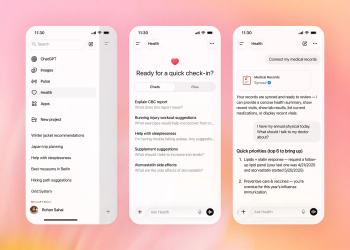
Viewpoint: All hospitals should publish their fee schedules
How one urinalysis reflects the state of U.S. health care.
Do you have any idea how much your hospital laboratory charges for an outpatient urinalysis? I didn't until recently, when my daughter showed me a copy of the bill my hospital was sending to her insurer. The charge for urinalysis, culture, and sensitivities was $491. When I ordered a follow-up a week later, it was $273. How could that be?
This inquiry about one urine test is symbolic. There are 20,000 items in the hospital's Chargemaster computer billing program. This massive list comprises the health-care problem in America. In light of this, I decided to spend time as an amateur economist. The first question I asked: Where is the hospital fee schedule published? Not on the hospital website. I called the lab director, who looked at his computer and gave me some numbers: UA with micro: $107. Urine culture: $208. Culture susceptibilities: $176. Total: $491.
I know that the insurance company must have a contracted fee schedule with the hospital. Assuming this to be private, I looked up the Medicare lab fee schedule. Medicare reimburses $4.43 for a urinalysis in Illinois. So why is my hospital charging $107 for the same urinalysis and not publishing it? The lab director didn't know.
I haven't heard about this lab fee because all my patients have insurance. But what about the 47 million people without insurance? What about those with high-deductible health insurance? Doesn't this outrageous bill, when uncollected, have an impact on their credit rating?
There is a chief financial officer in each large corporation. Most of us never see him. I called the CFO at my hospital. He is a fine fellow. He does not know why the fee schedule is unpublished. He does know a formula: One of the main factors in our pricing strategy is the "market." The hospital benchmarks seven nearby competitors. The board of directors and management has established a policy to be at the 50th to 75th percentile of market prices. Market data shows the average price of a urinalysis is $110 and the range is $61 to $157. On this procedure, the hospital is slightly below the 50th percentile.
But why does a simple urinalysis, which I used to perform for free as part of an office visit, now cost $107? Hospital charges appear to be threatening the credit ratings of the entire population and bringing us to the brink of socialized medicine. It might be that we don't have a free market. If we had a marketplace like the grocery stores down the street, with websites where we could compare prices and shop with our own money, prices might compete downward instead of ratcheting upward.
So who does care about hospital lab fees? The insurance company has no interest because it has a sacred, contracted fee schedule; the hospital charges what it wants, the insurance company pays what it wants, and the twain never meet. And the patient gets stiffed in between the two for what's left over.
Those who pay their own medical bills ought to care. The poor and uninsured can't pay anyway, so they might as well be overcharged. Who will notice? The fine print on your statement reads "Financial assistance may be available. Contact the Patient Accounts Department." If the poor are already penniless, why should they spend all day trying to understand why they are being persecuted? Those with high deductibles probably just reckon that this is the price you pay to get a lower premium.
Certainly, the doctor who orders the test has no stake in this tumult, never sees the bills, and likely never knows what the hospital charges. The reason this $4.43 test costs $107 is that no one has any power to challenge it.
Our new President has demanded greater transparency in medicine, and here is one way to make it happen: by enacting a law requiring all fees by hospitals and other health-care providers to be published and available to the public online. Only then can we stop the lemmings' march to the cliff.
Richard R. Grayson, MD, is an internist in Batavia, Illinois. Send your feedback to
.
The opinions expressed in The Way I See It do not represent the views of Medical Economics. Do you have an experience you'd like to share with our readers? Submit your writing for consideration to
.
Newsletter
Stay informed and empowered with Medical Economics enewsletter, delivering expert insights, financial strategies, practice management tips and technology trends — tailored for today’s physicians.








